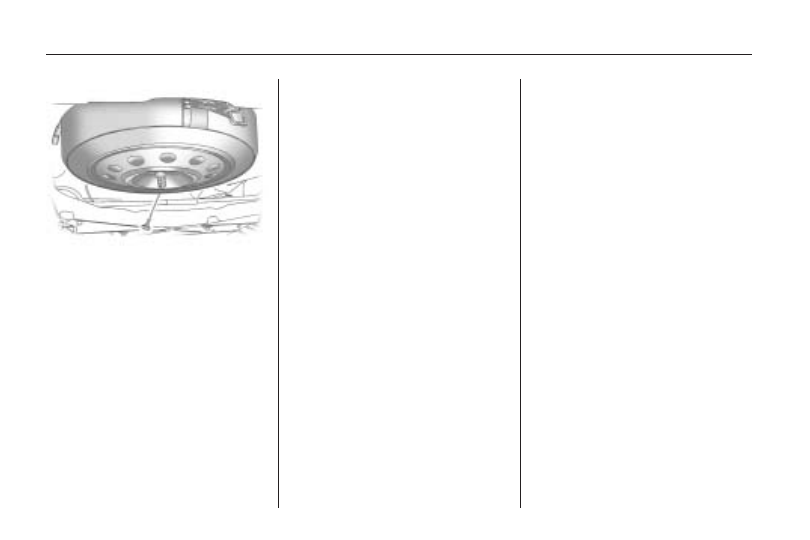Buick Enclave (2009 year). Manual - part 22

If the spare tire will not lower, the
secondary latch could be engaged.
Do the following to check the cable:
1. Check under the vehicle to
see if the cable is visible.
2. If it is not visible, see Secondary
Latch System on page 5-78.
If it is visible, first try to tighten the
cable by turning the lug wrench
clockwise until you hear two clicks
or feel it skip twice. You cannot
over-tighten the cable.
3. Loosen the cable by turning
the wrench counterclockwise
three or four turns.
4. If the spare tire has not lowered,
tighten the cable all the way and
then loosen it at least two times.
If the spare tire did lower to the
ground, continue with Step 5
under “Removing the Spare Tire
(Vehicles with the Rear
Convenience Center)” listed
previously.
5. If you still cannot lower the spare
tire to the ground, see Secondary
Latch System on page 5-78.
Removing the Flat Tire
and Installing the
Spare Tire
1. Do a safety check before
proceeding. See Changing a Flat
Tire on page 5-71 for more
information.
2. If the vehicle has a wheel cover,
loosen the plastic nut caps with
the wheel wrench. They will
not come off. Then, using the flat
end of the wheel wrench, pry
along the edge of the cover until
it comes off. Be careful; the
edges may be sharp. Do not try
to remove the cover with your
bare hands.
Store the wheel cover securely
in the rear of the vehicle until you
have the flat tire repaired or
replaced.
If the vehicle has aluminum
wheels, remove the wheel nut
caps using the wheel wrench.
5-74
Service and Appearance Care